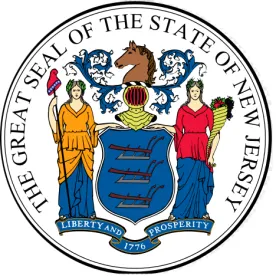One of the most frequent hot button issues in condominium communities, particularly those with multi-residential buildings, is whether or not the association will pay to repair damage to a unit’s interior stemming from a defect or issue, such as a water leak, in the common elements. A condominium association has specific duties and obligations in maintaining the general common elements of the community for which it is responsible for operating and managing. These duties and obligations are not only spelled out in the association’s governing documents, but also are required by law. For instance, the New Jersey Condominium Act requires that the association “shall be responsible for” such things, including but not limited to, “[t]he maintenance, repair, replacement, cleaning and sanitation of the common elements.”
However, while the controlling regulations and typical governing documents of a condominium association assign responsibility for the repair and maintenance of the common elements to the association and the interior of units to the unit owner, that distinction—in practice—does not always work to resolve conflicts between associations and unit owners arising from a leaky common element.
In the most typical of circumstances, a defect or issue with a common element, such as a roof or even a section of improperly installed shingles, allows water to infiltrate the building’s common element exterior and cause damage to the interior finishings of a unit. While it may bring some solace to the unit owner that the roof has been repaired or the path of infiltration remediated, that in and of itself will not make the unit owner whole. After all, the unit owner’s property was damaged because of the common element. In these circumstances, condominium association Boards, absent guidance or controlling provisions in the governing documents, must make the determination, many times a very politically-volatile decision, as to whether the association will compensate unit owners when common elements cause damage to unit interiors.
Condominium Board of Directors could rely on the typical language in governing documents requiring unit owners to “repair and replace” damaged unit property to support their decision not to compensate a unit owner for damage stemming from common elements. However, such a stance may only exacerbate a difficult situation and may ultimately cost both parties a pretty penny. In fact, taking such an approach could result in a lawsuit not only against the association, but against the board and even board members individually for breaching their duties to properly maintain and repair the common elements. Such lawsuits are not uncommon, and New Jersey courts routinely allow unit owners to bring claims against associations for damage to unit interiors caused by common element issues.
Of course, not all damage to unit property will be the association’s fault and careful consideration must be taken when assessing these situations. It must be noted that an association will generally only be liable for damages to a unit’s interior if it is determined that the association negligently maintained or failed to repair the at-issue common elements. Additional considerations include whether the damage is covered under the unit owner’s insurance policy, the association’s policy, or can be recovered against a third-party such as the original builder or recent contractor.
Balancing these considerations can often be a daunting task, but association boards do not have to make these difficult decisions alone. Having experienced counsel on your board’s side will ensure the right decisions are made for your community.



 />i
/>i

